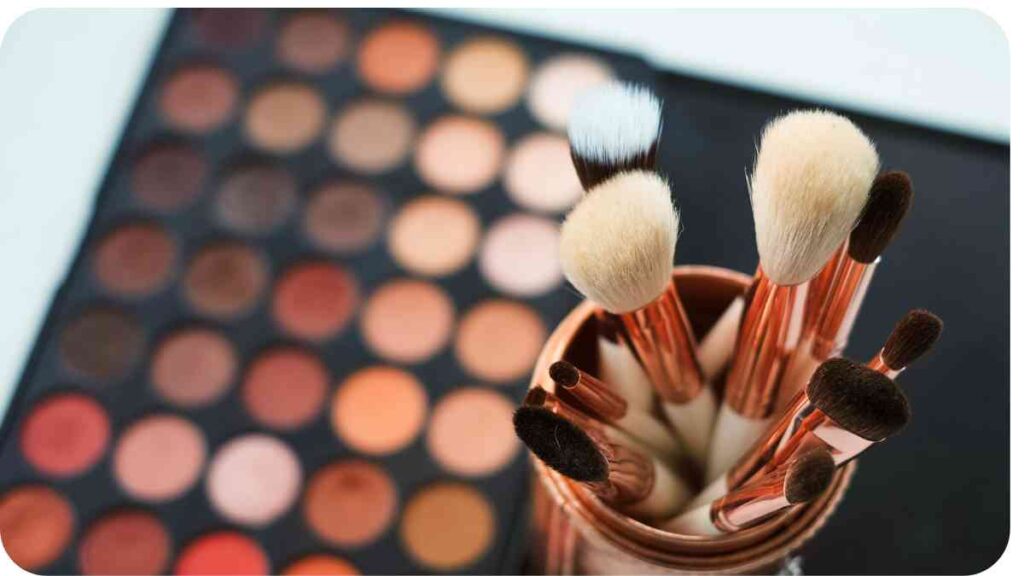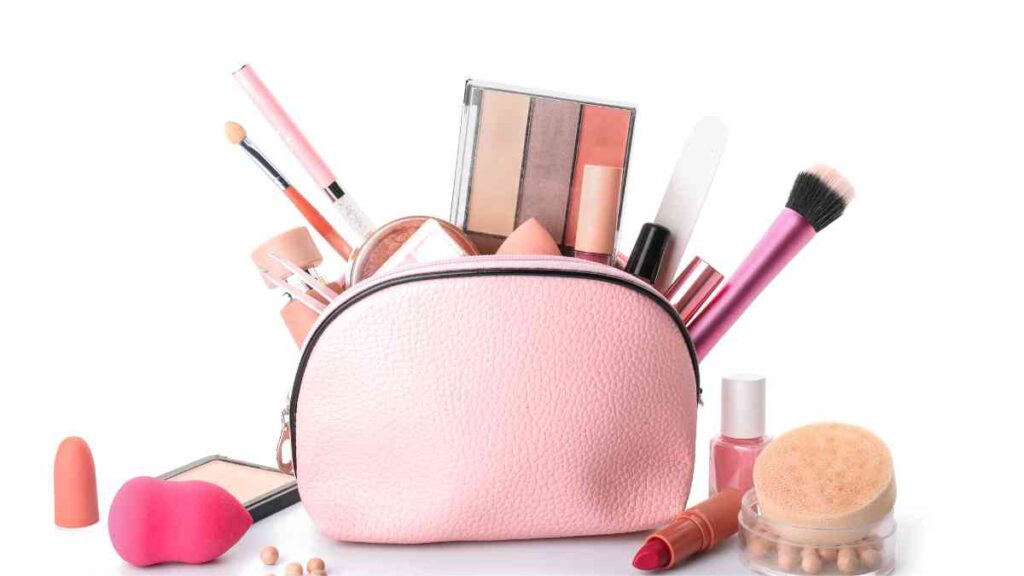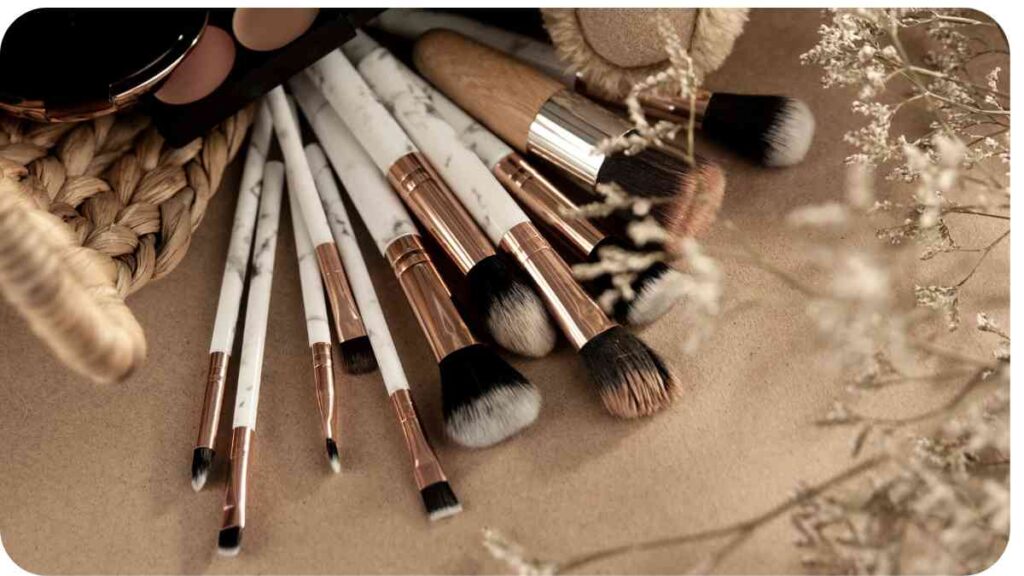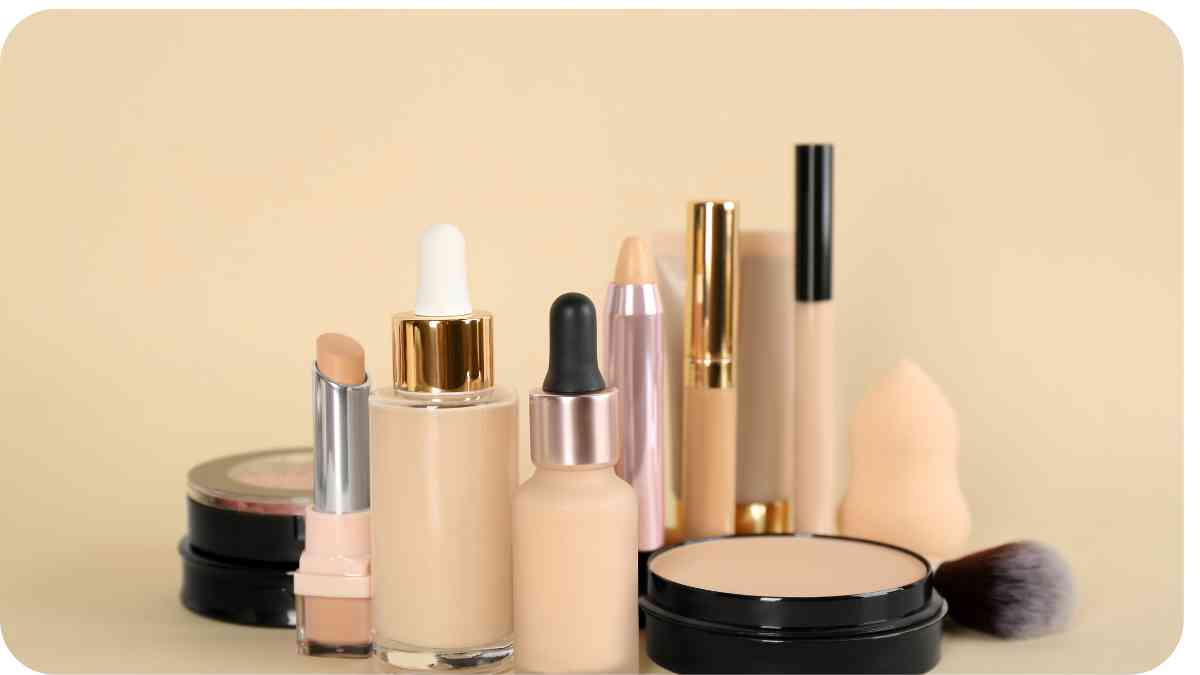Welcome to our comprehensive guide on the lifespan of makeup products. As a professional in the field, I have encountered numerous questions about when we should toss our favorite cosmetics and why it matters.
In this article, we will delve into the intricacies of makeup expiration dates, signs of expiration, how to prolong the lifespan of your makeup, when to bid farewell to certain products, and understand the environmental impact of expired makeup.
| Takeaways |
|---|
| Properly managing makeup expiration dates is essential for maintaining skin health and preventing adverse reactions. |
| Pay attention to visual changes, texture, and smell of makeup products to identify when they have expired. |
| Using expired makeup can lead to skin and eye infections, as well as allergic reactions. |
| Establishing proper makeup hygiene practices and organizing your collection can prolong the lifespan of your makeup. |
| Dispose of makeup products that have come into contact with eye infections or have noticeable signs of deterioration. |
| Consider the environmental impact of makeup waste and adopt sustainable practices when using and disposing of makeup. |
Understanding Makeup Expiration Dates

What Do Expiration Dates Mean?
Expiration dates on makeup products signify the recommended period within which the product should be used. They offer guidance on when the product is likely to maintain its quality and effectiveness. It’s important to adhere to these dates because using expired makeup can lead to a variety of issues, ranging from subpar results to potential health risks.
Achieve the perfect look with makeup tutorial. Learn expert techniques for a flawless appearance that suits every occasion.
Why Should You Pay Attention to Expiration Dates?
Using makeup beyond its expiration date can result in the growth of bacteria and microorganisms that may not be visible to the naked eye. These can lead to skin irritations, infections, and other adverse reactions. By using makeup products within their recommended lifespan, you can ensure better results and reduce the risk of potential harm.
Common Makeup Product Expiration Periods
Different types of makeup products have varying expiration periods. It’s essential to understand these timelines to make informed decisions about using or discarding your makeup.
Table: Makeup Product Expiration Periods
| Product | Expiration Period |
|---|---|
| Mascara | 3 to 6 months |
| Foundation | 6 to 12 months |
| Lipstick | 12 to 18 months |
| Eyeshadow | 12 to 24 months |
| Powder | 18 to 24 months |
| Eyeliner | 6 to 12 months |
| Blush | 12 to 24 months |
Proper Makeup Storage

To extend your makeup’s lifespan, it’s essential to store it correctly. Exposure to heat, humidity, and light can accelerate product breakdown and degradation. Here are some useful tips to ensure your makeup stays fresh:
- Store makeup in a cool, dry place away from direct sunlight.
- Avoid keeping makeup in humid areas like bathrooms.
- Keep products tightly closed to prevent air exposure.
- Take extra care when storing liquid or cream products, as they are more prone to bacterial growth.
Factors Affecting Makeup Shelf Life
Several factors can impact the shelf life of makeup products:
- Frequency of use: Products used every day may expire faster than those used sparingly.
- Product packaging: Containers with pumps or airless systems help protect against contamination and extend shelf life.
- Ingredient stability: Natural and organic products may have a shorter shelf life due to the absence of synthetic preservatives.
- Exposure to air, light, and heat: These factors can cause products to degrade faster.
Elevate your beauty routine with these must-try makeup products. Discover new favorites and stay on-trend with the latest in cosmetic innovation.
Table: Makeup Product Expiration Periods
| Product | Expiration Period |
|---|---|
| Mascara | 3 to 6 months |
| Foundation | 6 to 12 months |
| Lipstick | 12 to 18 months |
| Eyeshadow | 12 to 24 months |
| Powder | 18 to 24 months |
| Eyeliner | 6 to |
Signs of Expired Makeup
It’s crucial to be able to identify when your makeup has expired to avoid any negative effects on your skin. Here are some signs that indicate your makeup may no longer be safe to use:
Visual Changes
Expired makeup often undergoes visual changes that indicate its deterioration. Look out for:
- Changes in color or separation within the product.
- Dryness or clumping of liquid or cream products.
- Mold growth or fuzzy texture on the surface.
Changes in Texture and Smell
Expired makeup can have noticeable changes in texture and smell. Watch out for:
- Products become dried out or too runny.
- Unpleasant or rancid odors emanating from the product.
Skin Reactions
Using expired makeup can lead to adverse skin reactions. Pay attention to:
- Irritation, redness, or itching upon application.
- Breakouts or acne caused by clogged pores.
Health Risks Associated with Using Expired Makeup
Expired makeup can harbor harmful bacteria. Calibrating risks are essential to maintaining your health and well-being. Using expired makeup can potentially result in:
- Eye infections.
- Skin infections.
- Allergic reactions.
Table: Signs of Expired Makeup
| Signs | Indicates |
|---|---|
| Changes in color, separation | Deterioration of the product |
| Dryness or clumping | Product texture has changed |
| Mold growth, fuzzy texture | Product is contaminated |
| Dried out or runny | Altered consistency of the product |
| Unpleasant, rancid odors | Product has gone bad |
| Irritation, redness, itching | Possible adverse reaction on the skin |
| Breakouts, acne | Clogged pores or bacterial contamination |
| Eye infections, skin infections | Health risks associated with using expired makeup |
Prolonging the Lifespan of Your Makeup
Preserving the longevity of your makeup collection is possible with a few simple practices. By adhering to proper hygiene and care routines, you can extend the shelf life of your products. Consider the following tips:
Combat oiliness effectively with makeup products designed for oily skin. Achieve a matte finish and long-lasting results for a shine-free complexion.
Proper Makeup Hygiene

- Wash your hands thoroughly before using any makeup products.
- Clean and sanitize your makeup brushes regularly to prevent bacterial buildup.
- Refrain from sharing your makeup products with others to avoid cross-contamination.
- Replace any products used while you have an eye infection or cold.
Tips for Preserving Makeup
- Keep your products closed tightly when not in use to minimize exposure to air and contaminants.
- Avoid pumping your mascara wand too vigorously, as it can introduce air and bacteria into the product.
- Use a clean tool, such as a spatula or brush, to scoop out cream or liquid products to prevent contamination.
- Keep powders, such as eyeshadows or blushes, dry to maintain their integrity. Avoid adding water or moisture to these products.
Table: Tips for Prolonging Makeup Lifespan
| Tips | |
|---|---|
| Wash hands before using makeup | |
| Regularly clean and sanitize makeup brushes | |
| Avoid sharing makeup | |
| Discard products used during eye infection/cold | |
| Close products tightly when not in use | |
| Be gentle with mascara wands | |
| Use clean tools to scoop out cream/liquid products | |
| Keep powders dry |
When to Say Goodbye to Makeup
While it’s difficult to part ways with our beloved makeup products, it’s crucial to know when it’s time to bid them farewell. Maintaining good hygiene and safety should be prioritized when deciding to discard makeup. Here are some guidelines:
Unlock the secrets to flawless beauty with these expert makeup tips. From application techniques to product choices, enhance your makeup skills effortlessly.
Hygiene and Safety First
- If you have had an eye infection or cold, it’s essential to discard any makeup products that came into contact with the affected area. This prevents the risk of reinfection or spreading bacteria.
- Throw away any makeup that has a foul odor or shows visible signs of mold, discoloration, or texture changes.
- If you experience any adverse reactions like skin irritations or breakouts after using a certain product, it’s best to discontinue its use and toss it in the bin.
Makeup Organizational Tips
Organizing your makeup collection is not only aesthetically pleasing but also helps you keep track of products and their lifespan. Consider the following:
- Regularly declutter your makeup to get rid of expired or unused items. This ensures you have a streamlined collection of fresh products.
- Consider using a labeling system or keeping track of the purchase dates of your makeup to easily identify when it’s time to discard them.
- Store your makeup in a clean and organized manner, with appropriate separators or dividers to minimize cross-contamination.
Table: Guide to Discarding Makeup
| Guidelines | |
|---|---|
| Discard makeup after eye infections or colds | |
| Dispose of makeup with foul odor or visible changes | |
| Discontinue the use of products causing adverse reactions | |
| Regularly declutter and get rid of expired or unused items | |
| Label or track purchase dates to identify expiration | |
| Store makeup in an organized and clean manner |
The Environmental Impact of Expired Makeup
Understanding the consequences of using and disposing of expired makeup is crucial for adopting sustainable practices. The beauty industry produces a significant amount of waste, so let’s explore the environmental implications and how we can minimize our impact:
Unintended Consequences
- Disposing of expired makeup improperly can lead to contamination of land and water, contributing to environmental pollution.
- The packaging of makeup products, such as plastic containers and tubes, often ends up in landfills, taking years to decompose.
Sustainable Makeup Practices
- Choose makeup products with recyclable and eco-friendly packaging. Opt for brands that prioritize sustainability.
- Practice mindful purchasing by buying only what you need and will use. Avoid excessive hoarding of makeup products.
- Consider swapping or donating lightly used makeup products to minimize waste and give them a second life.
- Educate yourself about proper disposal methods for makeup products and packaging. Some brands offer recycling programs.
Master the art of the smokey eye with this comprehensive guide. Explore step-by-step instructions and pro tips for creating a captivating, sultry gaze.
Table: Makeup Waste by Numbers
| Statistics | |
|---|---|
| Improper disposal of expired makeup contributes to pollution | |
| Makeup packaging, like plastic containers, takes years to decompose | |
| Choose makeup with recyclable and eco-friendly packaging | |
| Practice mindful purchasing and avoid excessive hoarding | |
| Swap or donate lightly used makeup to minimize waste | |
| Educate yourself on proper disposal methods and recycling programs |
Conclusion
It’s crucial to understand the lifespan of makeup products to ensure both your health and the environment are protected. Adhering to expiration dates, identifying signs of expired makeup, and practicing proper hygiene can help you maintain the integrity of your cosmetics and minimize the risk of adverse effects.
By actively implementing sustainable practices and making informed choices, we can collectively reduce the environmental impact of the beauty industry. Remember, your makeup should enhance your beauty, not compromise it.
Further Reading
Here are some additional resources to explore the topic of makeup expiration and lifespan:
- Shelf Life of Makeup: When Should You Toss Your Beauty Products?: This article provides an in-depth look at the shelf life of makeup products, including tips for proper storage and signs of expiration.
- Makeup Expiration Dates: A Guide: Real Simple offers a comprehensive guide on makeup expiration dates, explaining why it’s important to pay attention to them and providing practical advice on when to discard certain items.
- The Lifespan of Your Makeup Products: Byrdie offers valuable information on makeup expiration dates for various products, focusing on mascara, foundation, and lipstick. The article includes expert tips on how to extend the lifespan of your makeup.
FAQs
How long does mascara last before it expires?
Mascara typically lasts for 3 to 6 months before it should be replaced. After this period, the risk of bacterial growth and eye infections increases.
What is the recommended shelf life for foundation?
Foundation generally has a shelf life of 6 to 12 months. However, its longevity can vary depending on factors such as packaging, ingredients, and storage conditions.
How long can you keep lipstick before it goes bad?
Lipstick can last for 12 to 18 months, although this may vary based on the quality and formulation of the product. Inspect your lipstick for any changes in smell, texture, or color to determine its expiration.
What is the typical lifespan for eyeshadow?
Eyeshadow can typically be used for 12 to 24 months. However, it’s essential to monitor any changes in texture, smell, or appearance to ensure the product is still safe to use.
When should you replace powder-based makeup like blush?
Powder-based makeup products, such as blush, usually have a lifespan of 12 to 24 months. Keep an eye on the product’s texture and color as indicators of expiration, and discard if any changes are noticeable.

Hi, you! I’m Hellen James. I’m a beauty and fashion writer who loves to make the world a little more stylish and I’d love for you to join me in the fun! I’ve been writing about beauty and fashion since I was a kid, but it wasn’t until recently that I really knew what it meant to be a real expert.

